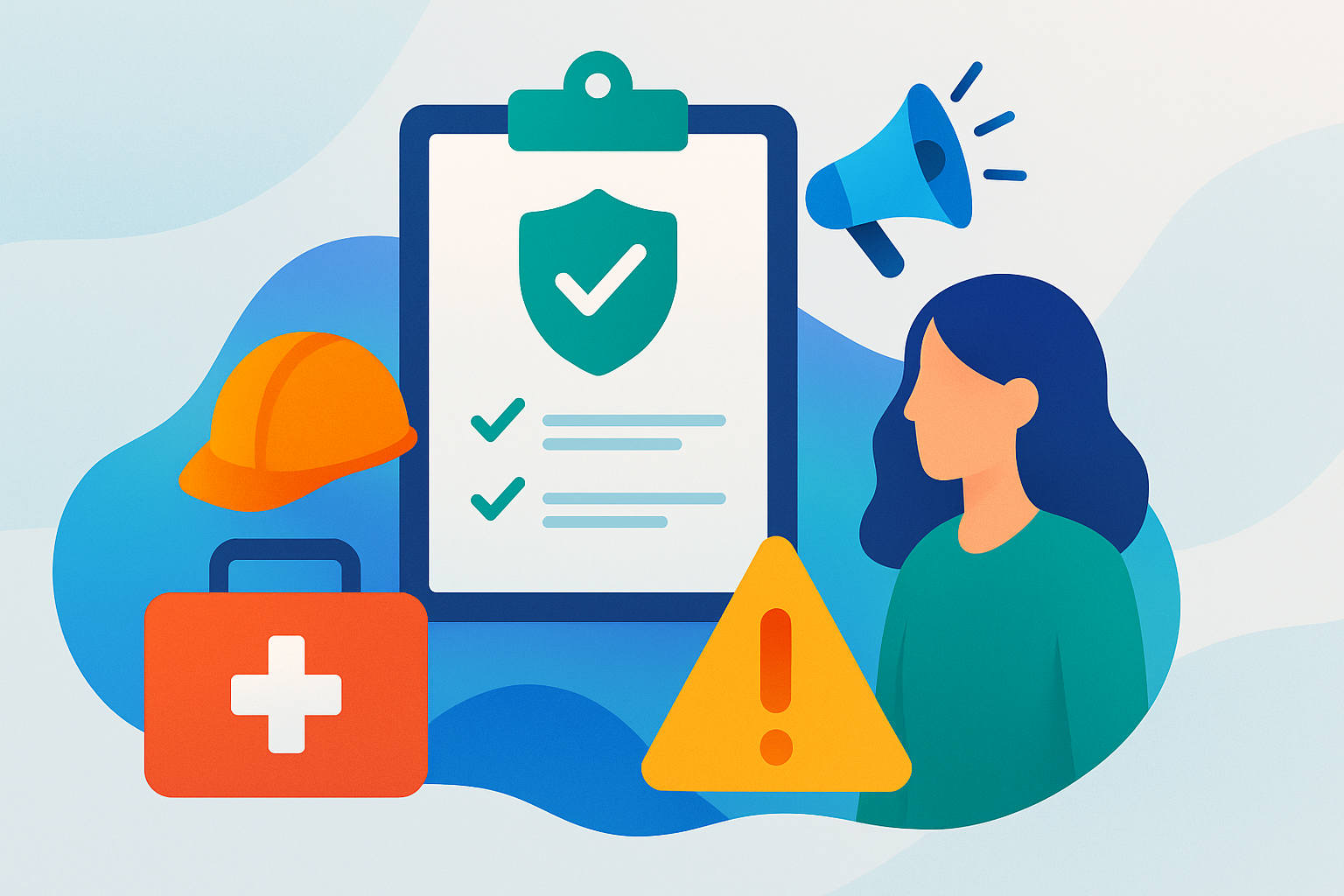Emergency Preparedness - Essential Tips for Event Planners

Every organizer dreams of a flawless event. But without an event safety plan, even small disruptions can quickly turn into bigger problems. Whether you’re running a community fundraiser, a multi-day conference, or a large-scale expo, preparing for emergencies protects your attendees, your team, and your reputation.
This guide shares practical steps to strengthen your event risk management approach, with tips you can apply immediately no matter the size of your team or event.
Why Emergency Preparedness Should Be a Priority
Emergencies at events aren’t always headline-making disasters. They can be as simple as a power outage, a lost child, or a sudden weather change. Ignoring these possibilities puts both safety and reputation at risk.
- For small community organizers: A clear plan reduces stress and helps small volunteer teams stay calm.
- For professional event agencies and associations: Risk management protects client trust and reduces liability.
- For organizers of large annual events: A documented plan ensures consistency year after year and helps onboard new volunteers or staff.
When you demonstrate that attendee safety comes first, you build confidence in your event and your ability to manage it.
Step 1: Conduct a Risk Assessment
Every event safety plan starts with understanding risks. Create a simple matrix to evaluate:
- Likelihood (low, medium, high)
- Impact (minor disruption to severe injury or cancellation)
Examples:
- Severe weather → Medium likelihood, high impact
- Overcrowding at registration → High likelihood, medium impact
- Medical emergency → Medium likelihood, high impact
Tactical Tip: Document these risks in your event management software. With ClearEvent, you can assign tasks (e.g.,
Set up weather monitoring,Design overflow space) to specific team members.
Step 2: Define Clear Objectives
Decide in advance:
- Should the event pause, continue, or shut down during different emergencies?
- What’s the threshold for evacuation?
- How should staff communicate with attendees and local authorities?
Tactical Tip: Write short, pre-approved public statements for social media and email.
Example: “Due to unexpected weather, we are moving all activities indoors. Please follow staff directions and check the event app for updates.”
This reduces hesitation and ensures your response is fast and professional.
Step 3: Engage Professionals Early
Reach out to local authorities and emergency professionals at the planning stage, not the final week. They can advise on:
- Optimal entry/exit flow
- Crowd density limits
- Medical team requirements
- Security staffing levels
Tactical Tip: Share your preliminary floor plan with fire and police services. They can often flag risks you might miss, like blocked egress routes.
Step 4: Build and Train Your Team
Your team and volunteers are your first responders. A well-trained team means fewer mistakes and faster action.
- Pre-Event Training: Review evacuation routes, emergency contacts, and reporting procedures.
- Role Assignments: Designate who manages crowd flow, who calls authorities, and who communicates with attendees.
- Technology: Use messaging features in your event communication tools to send real-time instructions to all staff.
Tactical Tip: Run a 15-minute tabletop exercise (scenario practice) the week before the event. Walk through what happens if a fire alarm goes off or a medical emergency occurs.
Step 5: Develop Practical Response Tools
Create a toolkit that supports your plan:
- Emergency Kits: First aid supplies, radios, flashlights, and portable chargers.
- Communication Channels: PA system, SMS alerts, and in-app notifications.
- Maps & Signage: Clearly mark emergency exits and safe zones.
- Checklists: Create scenario-specific checklists (e.g., weather plan, lost child response, medical emergency) and consider using an event planning checklist to keep your team organized.
Tactical Tip: Store all documents and checklists in your event management software, so every admin has access from any device.
Step 6: Plan for Specific Scenarios
Don’t stop at a generic plan. Address the most common scenarios directly:
- Medical Emergencies: Have trained first aiders and clear access routes for ambulances.
- Weather-Related Issues: Identify indoor backup spaces or weather-proof structures.
- Lost Children: Establish a safe reunification point and protocol.
- Power Outages: Rent backup generators for critical systems like lights and sound.
- Security Threats: Know how to quietly alert security without alarming attendees.
Tactical Tip: Create laminated pocket cards for staff with key emergency numbers and steps for each scenario.
Step 7: Communicate Clearly With Attendees
Attendees will remember how you communicated during a crisis more than the crisis itself.
- Use short, calm, and factual language.
- Update attendees at regular intervals, even if there’s no new information.
- Leverage your event app, PA system, and social media simultaneously for coverage.
Tactical Tip: Draft a FAQ in advance: “What happens if it rains?” or “Where is the medical station?” Publish it in your event portal before the event.
Final Thoughts
A strong event safety plan protects more than just attendees, it safeguards your reputation, your sponsors, and your bottom line. Event risk management is not about fear; it’s about professionalism.
By conducting a risk assessment, setting clear goals, involving experts, training your team, and leveraging event management software, you’ll turn disruptions into managed situations instead of chaotic crises.
Preparedness isn’t optional. It’s one of the smartest investments you can make in the success and safety of your event.
Want to simplify your emergency planning? Request a demo to see how ClearEvent’s event management software helps organizers build safer, more resilient events.
Frequently Asked Questions (FAQ)
What is an event safety plan and why do I need one?
An event safety plan is a documented strategy outlining how to handle emergencies such as medical issues, severe weather, or security threats. It ensures your team knows what to do, protects attendees, and helps you demonstrate professionalism to sponsors and stakeholders.
When should I start emergency planning for an event?
You should begin emergency planning at the very start of your event preparation. Early planning allows you to design safe layouts, involve local authorities, and build contingency strategies before critical details are locked in.
How can event management software help with emergency preparedness?
Event management software centralizes communication, task assignments, and checklists, making it easier to coordinate your team during a crisis. Tools like messaging, schedules, and document sharing ensure everyone has the information they need in real time.
What are the most common emergencies event planners should prepare for?
Common scenarios include medical emergencies, severe weather, lost children, power outages, and security concerns. Preparing specific response checklists for these situations reduces confusion and speeds up decision-making.
How do I communicate with attendees during an emergency?
Use calm, concise language delivered through multiple channels such as PA systems, SMS alerts, and your event app. Regular updates, even if brief, help attendees feel informed and reduce panic.
